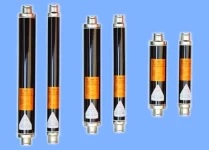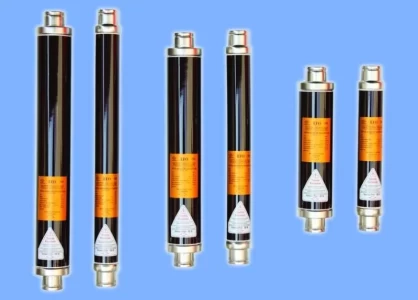Low Voltage Fuses
Innovations in Low Voltage Fuse Technology
Protecting Branch Circuits With Low Voltage Fuses
Low Voltage Fuses
Selectivity in Low Voltage Fuse Systems
Selectivity, or discrimination, in low voltage fuse systems is a critical design and operational aspect, ensuring that only the faulty circuit is disconnected when a fault occurs, thereby minimizing the impact on the rest of the electrical system. This concept is essential for maintaining the reliability and efficiency of low voltage networks, particularly in complex industrial, commercial, and residential installations.
The Significance of Selectivity
Selectivity, also known as discrimination or coordination, ensures that a fault event triggers the interruption only on the circuit segment closest to the fault location. This minimizes the impact on the overall system by:
Maintaining Power Supply: Healthy circuits downstream from the fault remain energized, minimizing disruptions to critical equipment and personnel.
Reduced Downtime: Isolating the fault to a specific circuit allows for faster restoration of power to unaffected areas.
Minimized Equipment Damage: Limiting the fault current exposure to downstream equipment reduces the risk of damage and costly repairs.
Improved Safety: By preventing widespread power outages, selectivity minimizes the potential safety hazards associated with electrical faults.
Challenges in Achieving Selectivity
Ensuring selectivity can be challenging due to the need for precise coordination between different protective devices, such as fuses, circuit breakers, and relays. These devices must...
Related Articles
Protecting Branch Circuits With Low Voltage Fuses
Low voltage (LV) fuses are unsung heroes within electrical systems, silently safeguarding branch circuits from potentially damaging overcurrent conditions. Found in homes, buildings, and commercial facilities, these essential components play a critical role in preventing electrical fires and...

Introduction to Smart Low Voltage Fuses
The advent of smart technology has revolutionized various aspects of the electrical industry, including the development of smart low voltage fuses. These advanced protective devices integrate intelligent features that enhance the functionality, reliability, and efficiency of electrical systems....
Environmental Impacts on LV Fuse Performance
Low voltage fuses are designed to protect electrical circuits from overloads and short circuits, ensuring the safety and reliability of electrical systems. However, their performance can be significantly affected by environmental conditions such as temperature and humidity. Understanding the impact...
Safeguarding Electronic Circuits with Low Voltage Fuses
Safeguarding Electronic Circuits with Low Voltage Fuses Electrical fuses, particularly low voltage fuses, are critical in protecting sensitive electronic circuits in a myriad of devices. From power supplies to advanced computing systems, these components play a vital role in ensuring operational...
Safeguarding Electronic Circuits with Low Voltage Fuses
Safeguarding Electronic Circuits with Low Voltage Fuses Electrical fuses, particularly low voltage fuses, are critical in protecting sensitive electronic circuits in a myriad of devices. From power supplies to advanced computing systems, these components play a vital role in ensuring operational...
Protecting Branch Circuits With Low Voltage Fuses
Low voltage (LV) fuses are unsung heroes within electrical systems, silently safeguarding branch circuits from potentially damaging overcurrent conditions. Found in homes, buildings, and commercial facilities, these essential components play a critical role in preventing electrical fires and...
Energy Efficiency and Sustainability in Fuse Design
The global emphasis on energy efficiency and sustainability is significantly influencing the design and selection of low voltage fuses. As integral components of electrical systems, low voltage fuses are evolving to meet the demands for not only safety and reliability but also for environmental...

Introduction to Smart Low Voltage Fuses
The advent of smart technology has revolutionized various aspects of the electrical industry, including the development of smart low voltage fuses. These advanced protective devices integrate intelligent features that enhance the functionality, reliability, and efficiency of electrical systems....
Innovations in Low Voltage Fuse Technology
Low voltage fuses are essential components in electrical systems, providing protection against overcurrent and preventing damage to equipment. Recent advancements in materials science and design techniques have led to significant improvements in the performance and reliability of these fuses. This...
Environmental Impacts on LV Fuse Performance
Low voltage fuses are designed to protect electrical circuits from overloads and short circuits, ensuring the safety and reliability of electrical systems. However, their performance can be significantly affected by environmental conditions such as temperature and humidity. Understanding the impact...
